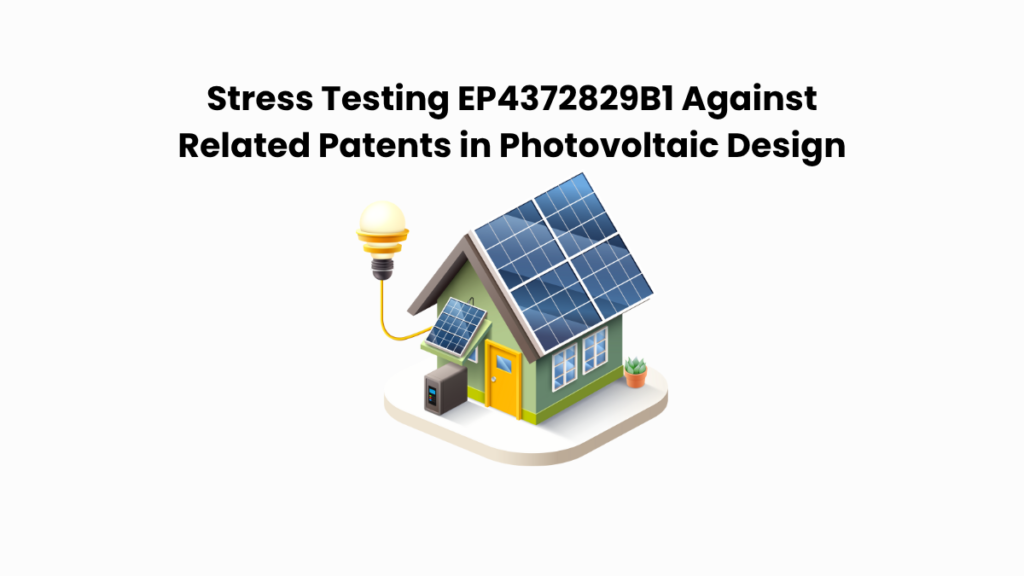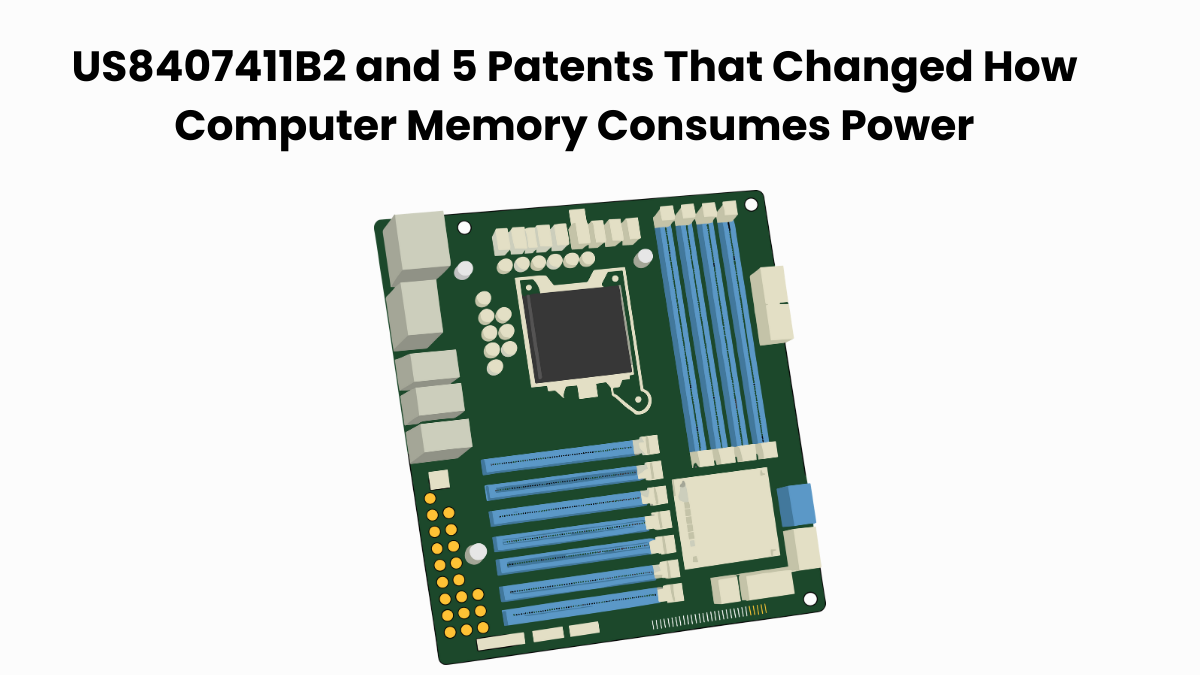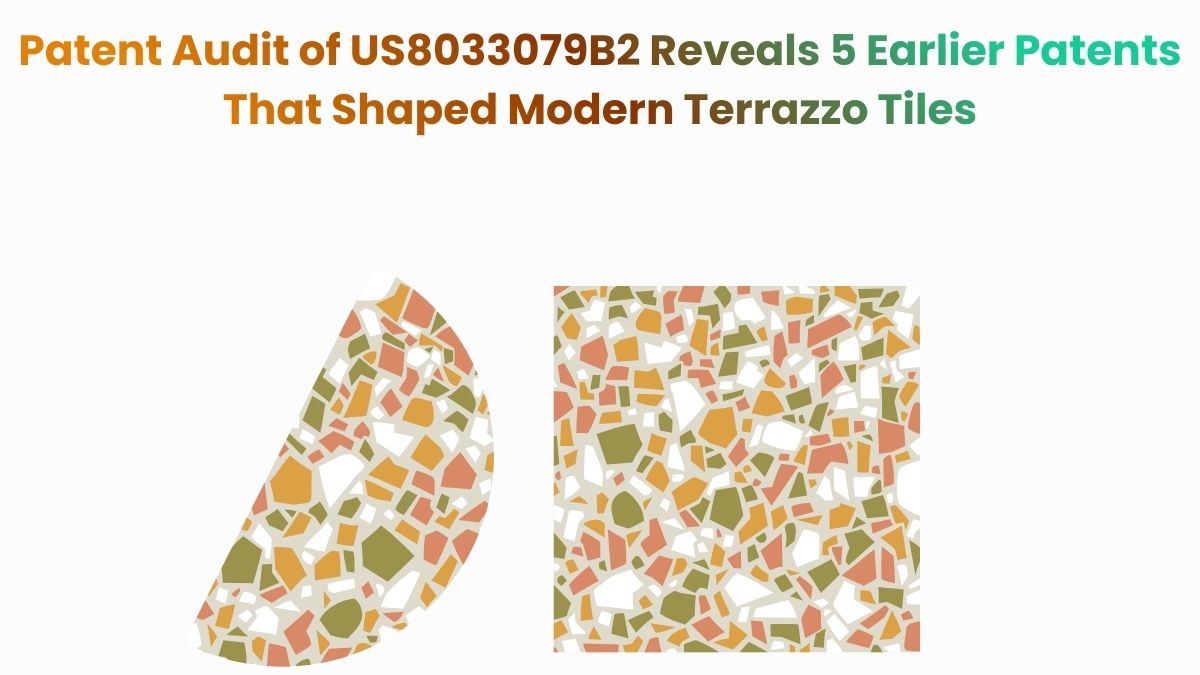Some patents shape the future of a field. Others attract attention because their core ideas surface in multiple overlapping innovations. EP4372829B1 fits that second category.
This European patent, assigned to Zhejiang Jinko Solar Co., Ltd. and Jinko Green Energy Shanghai Management Co., Ltd., has drawn recent scrutiny. It is currently involved in litigation with Energy3000 Solar GmbH and LONGi Group companies across several jurisdictions. But this article is not about legal strategy.
Instead, we utilize the Global Patent Search (GPS) platform to explore technologies that share conceptual or structural similarities with EP4372829B1. We’re not assessing infringement, we’re identifying relevant overlaps.
If you work in solar R&D, IP strategy, or product design, this data-backed review offers insight into where the ideas may connect.
Understanding Patent EP4372829B1
EP4372829B1 focuses on a solar cell design that improves energy conversion efficiency by combining advanced coatings, insulating films, and optimized material layers. It is classified under photovoltaic devices, crystallography, structural chemistry, and technologies supporting sustainable energy development.
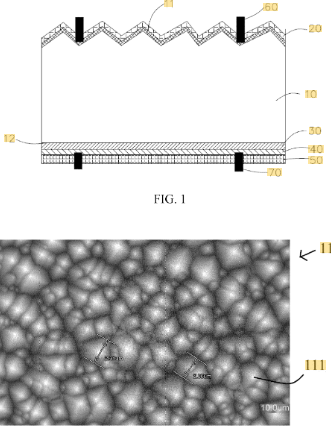
Source: Google Patents
Its Four Key Features Are
#1. Coating layer for charge separation – The solar cell features a specialized coating layer that enhances the separation of charge carriers, thereby improving photovoltaic efficiency.
#2. Insulating film for electrical performance – An insulating film is integrated into the structure to reduce energy loss and improve long-term electrical stability.
#3. Optimized layer structure – The design incorporates a layered material configuration based on crystallographic alignment to enhance conductivity and performance.
#4. Durability for sustainable applications – Materials used are selected for high durability, supporting long-term use in sustainable energy systems under various environmental conditions.
The patent presents a materials-based solution to enhance solar cell performance through structural innovation. Its approach reflects current trends in durable, high-efficiency photovoltaic technology.
Did you know: Durability at the material level also connects with emerging trends in self-healing materials now being applied in solar and electronics.
Similar Patents As EP4372829B1
To explore the innovation landscape surrounding EP4372829B1, we ran the patent through the Global Patent Search tool. Below is a quick glimpse of the GPS tool in action:
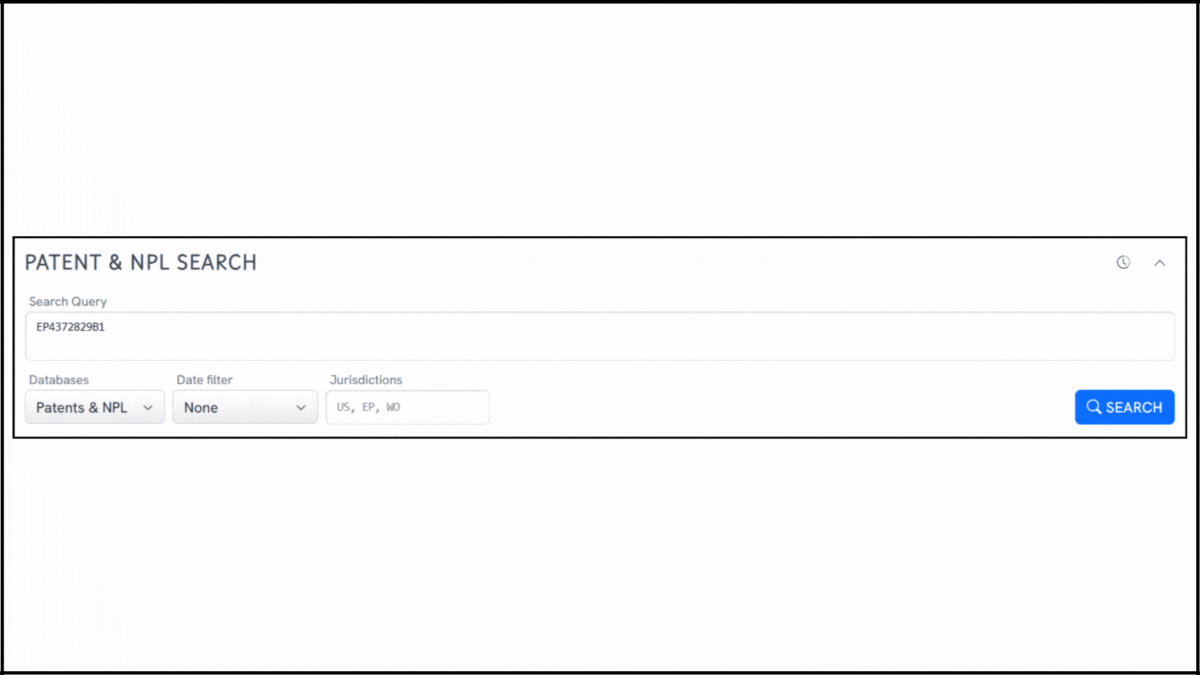
Source: Global Patent Search
This analysis surfaced a list of related patents that share technical similarities in material composition, structural layering, and photovoltaic surface treatment. Below, we highlight five of these references that reflect comparable approaches in solar cell enhancement and energy conversion. These examples offer insight into how similar challenges have been addressed across earlier technologies.
#1. CN206194755U
This Chinese utility model, CN206194755U, published in 2017, describes a crystalline silicon solar cell with a specialized surface texture. The invention introduces a dual-region structure, nano-suede and micro-suede surfaces, to optimize electrical contact while reducing passivation challenges and contact resistance.
Below, we have added snapshots from the GPS tool highlighting the relevant snippets from the specification for the similar patents.

What This Patent Introduces To The Landscape
- Nano-suede contact region: Utilizes a nano-textured surface in contact areas to reduce resistance and enhance electrode connectivity.
- Micro-suede non-contact region: Maintains a micro-textured surface in the non-contact areas to minimize passivation loss and improve light absorption.
- Dual-structure light-receiving surface: Proposes a hybrid surface design to balance passivation performance and carrier collection efficiency.
- Optimized electrode interaction: Focuses on fine-tuning contact structures for better electrical performance without compromising optical gain.
How It Connects To EP4372829B1
- Both patents focus on advanced surface structures to enhance photovoltaic efficiency.
- CN206194755U targets texture optimization, complementing EP4372829B1’s emphasis on material coatings and layer arrangement.
- Each design seeks to manage light interaction and charge movement at the surface level.
Why This Matters
This reference highlights how structural refinements, especially in contact surface design, play a critical role in solar cell performance. It aligns with EP4372829B1’s goals of maximizing efficiency through material and interface engineering.
#2. US20170358695A1
This US patent application, US20170358695A1, published in 2017, describes a textured surface structure for crystalline silicon solar cells using pyramid-shaped microstructures. It proposes a preparation method that involves chemical corrosion and laser etching to enhance light trapping and reduce surface reflectivity.

What This Patent Introduces To The Landscape
- Pyramid microstructure design: Implements a surface composed of inverted pyramid-shaped microstructures to enhance light absorption.
- Laser etching technique: Uses laser methods to create groove patterns that reduce surface reflectivity as low as 8.3%.
- Corrective chemical corrosion: Introduces a post-etching step to refine texture formation and achieve uniform micro-structuring.
- Light-trapping enhancement: Focuses on physical surface geometry to minimize reflectivity and improve overall photovoltaic efficiency.
How It Connects To EP4372829B1
- Both focus on modifying surface structure to improve solar energy capture.
- EP4372829B1 enhances performance through coatings, while US20170358695A1 achieves similar goals through surface geometry.
- Each targets interface optimization to reduce energy loss and increase efficiency.
Why This Matters
This reference shows how geometric texturing can complement coating-based enhancements in solar cells. It reinforces EP4372829B1’s objective of improving performance through surface-level engineering strategies.
#3. WO2011119910A2
This international patent application, WO2011119910A2, published in 2011, presents a high-efficiency crystalline silicon solar cell design featuring shielded electrical contacts formed through a passivating dielectric layer. It combines surface texturing, controlled doping, and contact architecture to minimize recombination and maximize energy conversion.
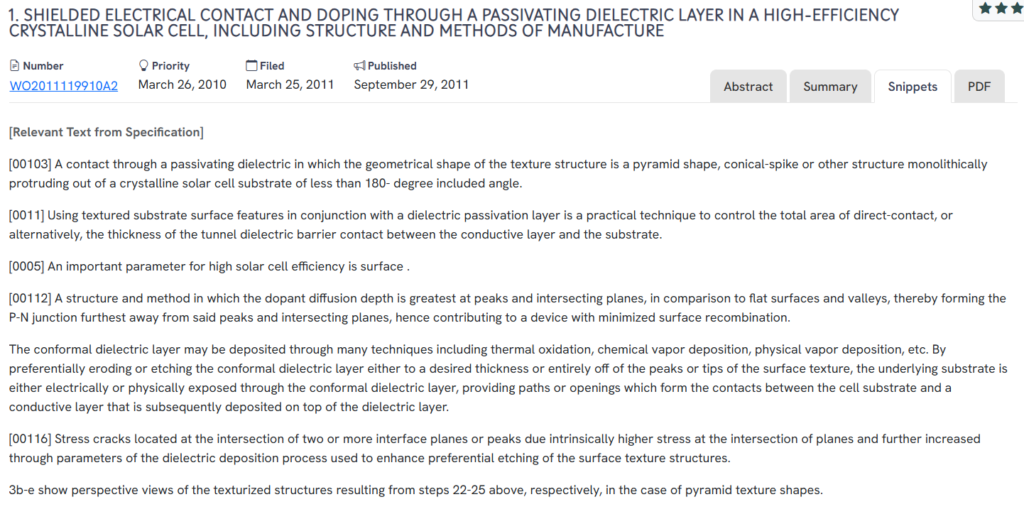
What This Patent Introduces To The Landscape
- Passivating dielectric contact structure: Describes contacts formed through a conformal dielectric layer that reduces surface recombination and enhances electrical performance.
- Textured surface geometry: Uses pyramid or conical-spike structures on the substrate to manage contact area and improve junction behavior.
- Dopant-controlled junction depth: Achieves deeper P-N junctions at textured peaks and planes to reduce recombination at critical areas.
- Layer deposition techniques: Details various methods like PECVD and APCVD for creating layered structures that maintain passivation and conductivity.
How It Connects To EP4372829B1
- Both patents utilize surface engineering to increase solar cell efficiency.
- WO2011119910A2 focuses on dielectric layers and contact geometry, complementing EP4372829B1’s material coatings and layer structuring.
- Each aims to reduce energy loss through careful design of interfaces and structural transitions.
Why This Matters
This reference supports the ongoing shift toward multi-layered, surface-optimized solar cells. It reinforces EP4372829B1’s focus on passivation, efficiency, and structural control in photovoltaic architecture.
#4. DE202021004469U1
This German utility model, DE202021004469U1, published in 2025, describes a solar cell with optimized texturing on both front and rear surfaces. It focuses on controlling substructure geometry and oxide layer uniformity to reduce contact resistance and enhance photoelectric conversion efficiency.

What This Patent Introduces To The Landscape
- Dual-texture surface design: Implements pyramid-shaped microstructures on both front and rear surfaces to enhance contact performance and light interaction.
- Tunnel oxide layer optimization: Controls substructure spacing to achieve high-density, uniform tunnel oxide layers, resulting in improved passivation and reduced doping defects.
- Improved electrode formation: Enhances metal contact through screen printing by enabling paste to fill surface textures more effectively.
- Photoelectric conversion enhancement: Increases open-circuit voltage and fill factor by minimizing series resistance and refining layer deposition parameters.
How It Connects To EP4372829B1
- Both patents focus on precision-engineered surface structures to improve solar cell performance.
- DE202021004469U1 complements EP4372829B1’s coating innovations with oxide layer tuning and texture control.
- Each design improves charge collection and reduces resistance through structural and material enhancements.
Why This Matters
This reference demonstrates how back-surface texture and oxide management directly impact efficiency. It supports EP4372829B1’s core goals of enhancing performance through material control and process refinement.
#5. JP2002299660A
This Japanese patent application, JP2002299660A, published in 2002, describes a thin-film crystalline silicon solar cell featuring a finely textured back electrode layer. The design incorporates polygonal pyramid concavo-convex structures to enhance light confinement and suppress leakage current, with attention to precise surface angles and texture dimensions.

What This Patent Introduces To The Landscape
- Concavo-convex electrode structure: Uses polygonal pyramid shapes on the back electrode layer to improve light trapping and internal reflectivity.
- Defined surface angles: Specifies optimal inclination angles (8°–40°) to prevent current leakage and enhance structural efficiency.
- Sub-micron surface spacing: Maintains spacing between texture valleys at 5 μm or less to control energy flow and reduce interface loss.
- Barrier layer implementation: Allows for the insertion of diffusion barriers to prevent metal contamination between layers.
How It Connects To EP4372829B1
- Both patents focus on structural surface features that enhance photoelectric conversion and energy management.
- JP2002299660A emphasizes texture and reflection, complementing EP4372829B1’s focus on coatings and layer stability.
- Each invention tackles efficiency through advanced interface engineering at critical photovoltaic junctions.
Why This Matters
This reference highlights the crucial role of back-layer textures and material geometry in determining solar cell performance. It supports EP4372829B1’s goals of achieving high efficiency through precision-engineered material design.
Fun Fact: Thin-film solar cells and AMLCD glass share chemistry challenges. EP3296274B1 Patent Audit on Display Substrates explains oxide balance and arsenic-free agents, paralleling photovoltaic panel requirements. Read on to know more.
How To Find Related Patents Using Global Patent Search

Understanding the broader patent landscape is key when analyzing photovoltaic materials, surface treatments, or solar cell efficiency enhancements. The Global Patent Search tool streamlines this process, helping users identify inventions that reflect similar material configurations, texture strategies, or energy conversion methods.
1. Enter the patent number into GPS: Start by entering a patent number like EP4372829B1 into the GPS tool. The platform transforms it into a smart query, which you can refine using terms like surface passivation, oxide layering, or photovoltaic coating.

2. Explore conceptual snippets: Instead of comparing features claim-by-claim, GPS now offers curated text snippets. These highlight how other systems engineer material layers, optimize electrode contact, or reduce surface recombination losses.
3. Identify related inventions: The tool reveals patents that address passivation control, structural layering, or light-trapping techniques, showing how similar performance challenges have been tackled across generations of solar cells.
4. Compare systems, not legal claims: Rather than focusing on legal claim language, GPS compares how systems are built and function. This enables users to explore design parallels without getting caught in formal patent terminology. These insights align with how AI-driven innovations are helping climate tech companies tackle energy efficiency challenges.
5. Accelerate cross-domain insights: Whether you’re working in solar cell R&D, materials science, or energy efficiency strategy, GPS uncovers related innovations across technical domains that might otherwise remain disconnected.
With this approach, Global Patent Search gives engineers, researchers, and IP teams a structured, concept-first way to explore related solar technologies and inform better innovation decisions.
Disclaimer: The information provided in this article is for informational purposes only and should not be considered legal advice. The related patent references mentioned are preliminary results from the Global Patent Search tool and do not guarantee legal significance. For a comprehensive related patent analysis, we recommend conducting a detailed search using GPS or consulting a patent attorney.

